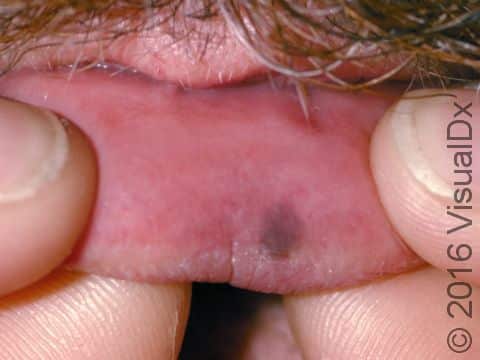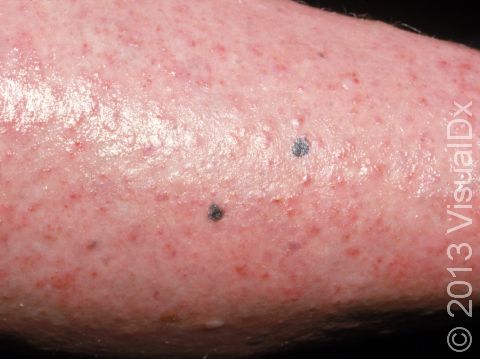Lentigo Simplex
Lentigo simplex is a type of color-containing (pigmented) lesion not caused by sun exposure, which looks like the freckle-like condition (lentigo) caused by sun exposure (solar lentigo). In both conditions, an increased number of pigment-producing cells (melanocytes) are present. Lentigo simplex can occur anywhere on the body, including areas that are not exposed to sunlight. Multiple lentigos are associated with several inherited syndromes, but lentigo simplex can also occur as a single lesion. Single lesions often develop on the lips or on the gums. Lesions may be caused by some forms of ultraviolet light therapy. If this is the case, the lesion may be seen as identical to those caused by exposure to sunlight.
Who's At Risk?
Lentigo simplex may occur in people of all ages. The lesions usually appear first in early childhood, but they can also be present at birth or develop later in life.
Signs & Symptoms
Lentigo simplex can occur anywhere on the body, including areas that are not exposed to sunlight. They appear as brown to almost black, small spots (macules), usually 3 mm or smaller in diameter. The edges (margins) may be smooth or somewhat jagged with even distribution of color.
Self-Care Guidelines
None necessary.
Treatments
Lentigo simplex is a non-cancerous (benign) lesion. Your physician may recommend:
- Periodic follow-up evaluations.
- Surgical removal of single lesions that may be difficult to distinguish from malignant lesions, such as melanomas.
Visit Urgency
See a physician for evaluation of any colored (pigmented) lesion if you are not sure what it is.
Trusted Links
References
Bolognia, Jean L., ed. Dermatology, pp.981, 1761-1763. New York: Mosby, 2003.
Freedberg, Irwin M., ed. Fitzpatrick’s Dermatology in General Medicine. 6th ed, pp.863, 882-884. New York: McGraw-Hill, 2003.
Last modified on October 5th, 2022 at 7:37 pm

Not sure what to look for?
Try our new Rash and Skin Condition Finder

